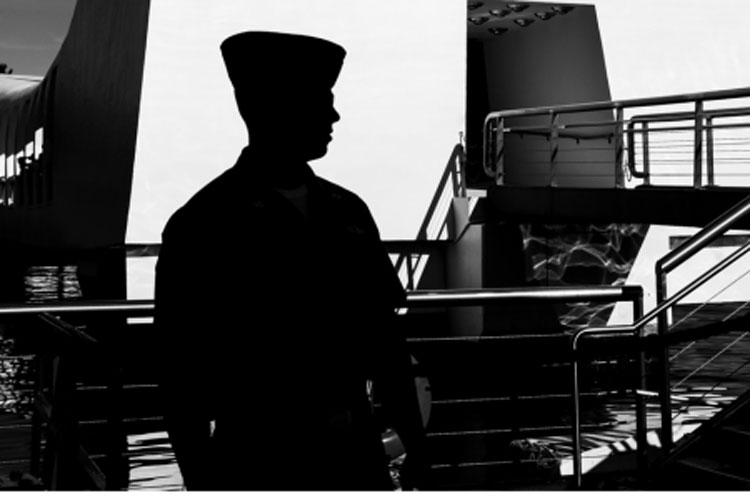Photo Courtesy Asbestos Ships Organization
By Christina Johnson
Over the past century, due to the WWII war effort demanding large amounts of affordable materials for military equipment, the U.S. military has used asbestos extensively. The mineral was abundant in the markets, and manufacturers took advantage of its insulating qualities and low price by ignoring the health risks of mixing asbestos into products. The growing number of toxic exposure cases among veterans today mirrors the many health hazards they faced during service, including asbestos exposure.
Because ships needed insulation from bow to stern to fight battles on the oceans, the Navy applied the most asbestos out of all five military branches. The Two-Ocean Navy Act expanded the U.S. Naval Forces by more than 70% before the States’ entry into the war, and shipbuilding coped with the high demand by applying asbestos insulation wherever possible. It put all naval personnel serving on ships built before the 1980s at an exceptionally high risk of asbestos exposure and developing severe asbestos diseases decades after service.
However, this doesn’t exclude other military installations from being a potential source of asbestos contamination. It is why asbestos exposure is a health concern even today for all veterans who might have the toxic fibers in their lungs, including those among the veteran community in Graham County and Arizona, as well as Safford City’s veterans.
Graham County’s military history includes Fort Grant, a former United States Army fortification that is now serving as a prison. Safford City’s WWII history encompasses one of the seven additional branches of POWwork camps where prisoners provided a workforce for the local farmers. As a tribute to its citizens who fought in the war, the city’s Safford Regional Airport has the new official name of Safford Regional Airport-1LT Duane Spalsbury Field, named after Duane Spalsbury, a fighter pilot in the Second World War.
Arizona has seven military bases, including Luke Air Force Base, also known as the “Home of the Fighter Pilot,” where more than 12,000 pilots trained and graduated annually throughout World War II. Arizona also hosts the Arizona National Guard Recruiting, a military force with a tradition dating back to 1636 in training Guard Soldiers to defend community and country, and Davis-Monthan Air Force Base in Tucson, an area with many military and retired personnel residents.
Asbestos exposure permanently impacts veterans’ health

Asbestos breaks into microscopic fibers when disturbed, and the tiny particles can float in the air for hours. It’s the white dust many veterans remember covering their bunks or permeating the air in the shipyards. Due to their size, asbestos fibers are easily inhaled or ingested, making asbestos dust one of the most toxic substances humans have ever encountered. The tiny, sharp-edged threads injure major organs permanently and lead to devastating diseases.
One of the most terrible aspects of asbestos diseases is the decades-long latency period between the first symptoms and initial exposure. Even if veterans had no health problems during their service, they’d learn the consequences of asbestos exposure only when they’re diagnosed with illnesses stemming from it, like lung cancer, asbestosis, mesothelioma, or other incapacitating respiratory illnesses.
With Arizona ranking 7th in the U.S. for lung cancer cases and 17th among all states for asbestos-related deaths, veterans should make an appointment with the doctor as soon as possible. Knowing that early detection significantly improves treatment outcomes and adds years to life, they can be proactive by:
- Attending periodic health check-ups and being open about military service and possible asbestos exposure. Inhaled asbestos fibers damage the lungs first, so veterans should request chest X-rays, CT scans, and pulmonary function (breathing) tests. These tests show any damage caused by the asbestos particles and help diagnose benign and malignant asbestos-related diseases.
- Learning about legal rights awarded to veterans who know they worked in an asbestos-contaminated environment while serving or those who suspect they may have been exposed. Legal avenues and compensation programs are available through asbestos trust funds and Veterans Affairs to help vets harmed by asbestos exposure.
- Sharing their knowledge about asbestos exposure. By doing so, they can raise awareness and educate people. Vets can play a central role by openly speaking about their experiences, making sure that others who have protected our country are informed.
In addition to expressing our gratitude to veterans, we also have a responsibility to help protect their well-being. By drawing awareness to this still lurking danger, we can make sure that those who served receive the care and support they rightly deserve.
About the author:
Cristina Johnson is a Navy veteran advocate for Asbestos Ships Organization, a nonprofit whose primary mission is to raise awareness and educate veterans about the dangers of asbestos exposure on Navy ships and assist them in navigating the VA claims process.








